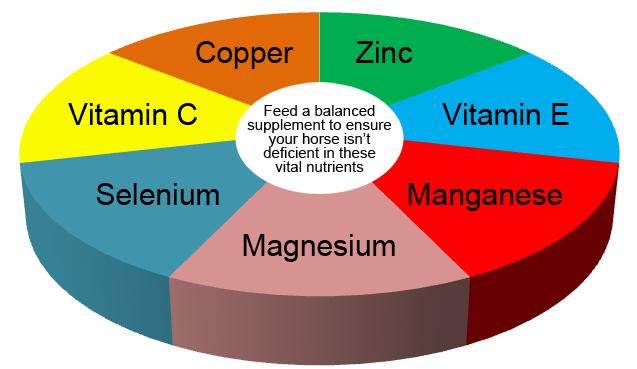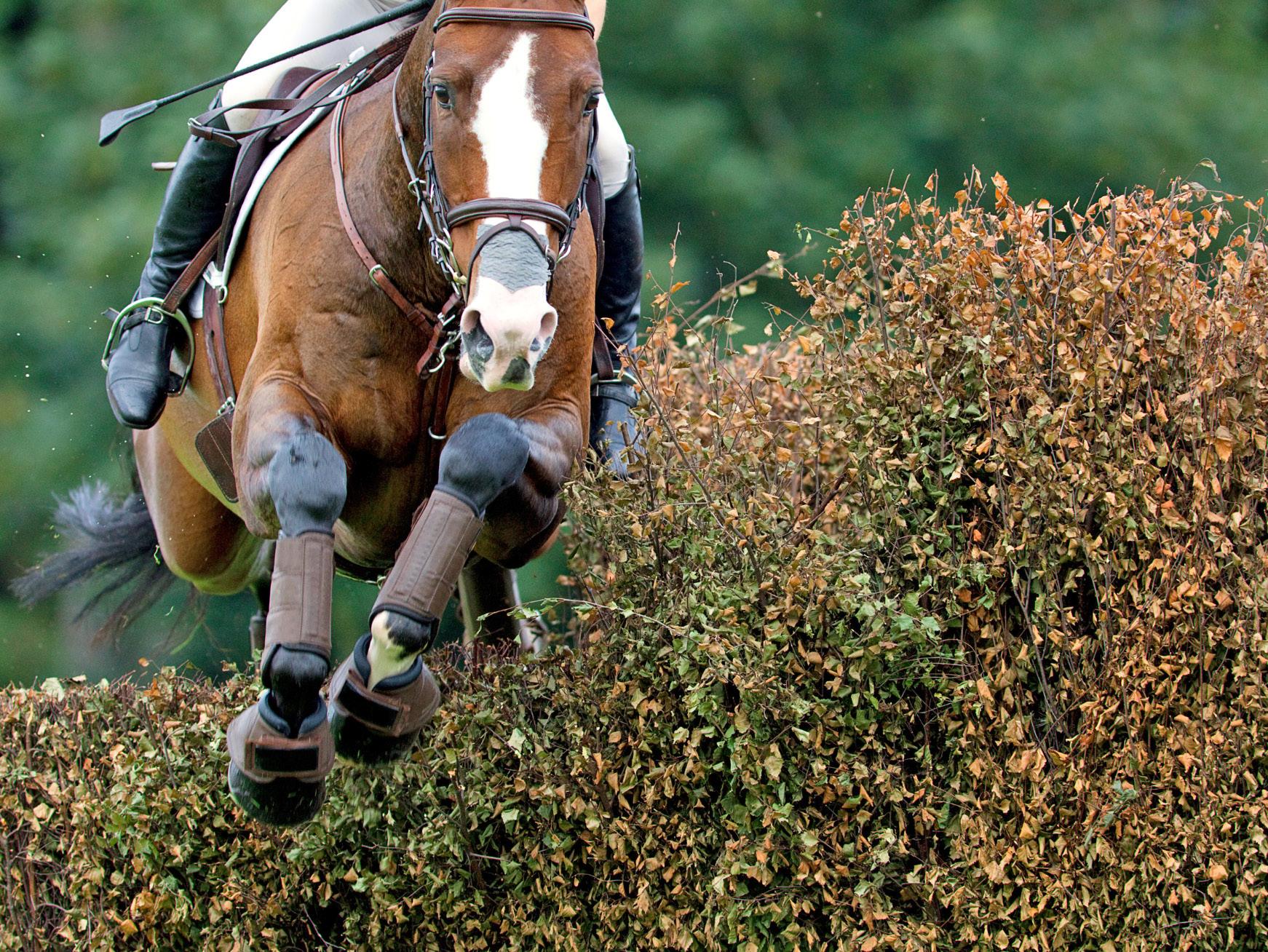
6 minute read
Feature: Feeding and fatigue
FEATURE
Feeding and fatigue
What’s in the feed bin can help your horse perform a task more easily, decrease their injury risk and delay fatigue, writes DR JENNIFER STEWART.
Horses are elite athletes, reaching speeds up to 88.5kph, with a heart that every minute can beat 240 times and pump 300 litres of blood, and lungs that can breathe 120 breaths a minute and move 60 litres of air a second. Ultimately however, fatigue limits performance and they either stop exercising or slow down.
Three broad categories of fatigue can occur alone or in combination. Structural fatigue from poorly trained or tired tendons and muscles; metabolic fatigue from increasing body heat, waste products and decreasing energy reserves; and central fatigue linked to falling brain serotonin (the ‘happy’ hormone), which is associated with decreased motivation, lethargy, tiredness and incoordination.
Fatigue in flat racing, eventing, polo, show jumping and carriage horses is a different combination to fatigue in endurance and trail horses, and in dressage and arena horses performing complex manoeuvres. Genetics and training determine athletic potential - how close a horse comes to reaching potential is affected by nutrition.
Nutrition and training should minimise the exercise-induced changes that herald fatigue. The purpose of training is to familiarise the muscles with the demands of the discipline. The diet must support this with different forms of energy, the correct protein array, micronutrients, antioxidants and vitamins.
Energy: The main limiting nutrient is energy. Traditionally supplied by grains, there are now much safer, more natural ways to fuel muscles. Providing three times the energy of grains, oils increase the speed of mobilisation, uptake, and storage of energy by the working muscles. Falling blood glucose levels precipitate fatigue and oils exert a sparing effect on blood glucose by providing the muscles with an alternative source of fuel.
This glucose sparing delays the onset of fatigue, so that although horses cannot increase their maximum effort, they can maintain it for longer. Roughages such as beet pulp (soaked and fed at up to three kilograms a day) and early-cut, highly digestible hays also offer benefits by avoiding the swings in blood glucose and insulin, and the acidosis associated with grains. This alkalising effect is a natural way to counteract some of the acid buildup induced by intense exercise. The gradual introduction of 500 to 1,000ml of oil to the diets of working horses can delay the onset of fatigue. And some exciting recent research has found that Warmblood dressage mares on high fibre, oil-enriched diets had higher levels of serotonin.
But no amount of energy can improve stamina and strength – for this we need protein, or more specifically, essential amino acids (EAA). Each tissue has its own ‘recipe’ of EAA. Regardless of the percentage protein of a feed, if there is not enough of each EAA, a limit to muscle and red cells synthesis is set, and the other essential amino acids cannot be used and are stored as fat. When this occurs, horses will lay down fat instead of building muscle, blood and bone. Soy, lucerne and whey are all good sources of essential amino acids to help your horse build muscle mass and strength.
Regulating body heat: Regulating body heat is a formidable challenge. When humidity is high, overheating during strenuous exercise is a real risk. In endurance exercise, heat exhaustion is more often due to dehydration and electrolyte loss – both of which contribute to premature fatigue. Even mild dehydration has been shown to reduce performance because the blood volume is smaller and the heart must work harder to maintain circulation.
Our task is to ensure our horses have enough salt (sodium chloride) and water before, during and after exercise. For horses doing moderate daily exercise in cool to moderate temperatures, 25g of salt twice a day increasing to 50g twice a day in hot weather is a good rule of thumb. Calcium and magnesium intake should be doubled in hot weather and supplementation is recommended as most diets are deficient. Free access to water and electrolytes during prolonged exercise can increase the time it takes for a horse to fatigue by nearly 23 per cent – meaning a horse can work for 23 per cent longer before getting tired.
The range of electrolyte supplements is huge. Generally, the higher the sodium chloride content, the better the product. Anything with more than 15 per cent sugar/glucose should be avoided. Electrolyte paste syringes should deliver at least 20 to 30gms of electrolytes per dose. You can make excellent electrolyte mixes at home using straight salt, or a 3:1 ratio of salt to potassium chloride (Lite or Lo-salt) in honey or apple sauce with cornflour thickening.
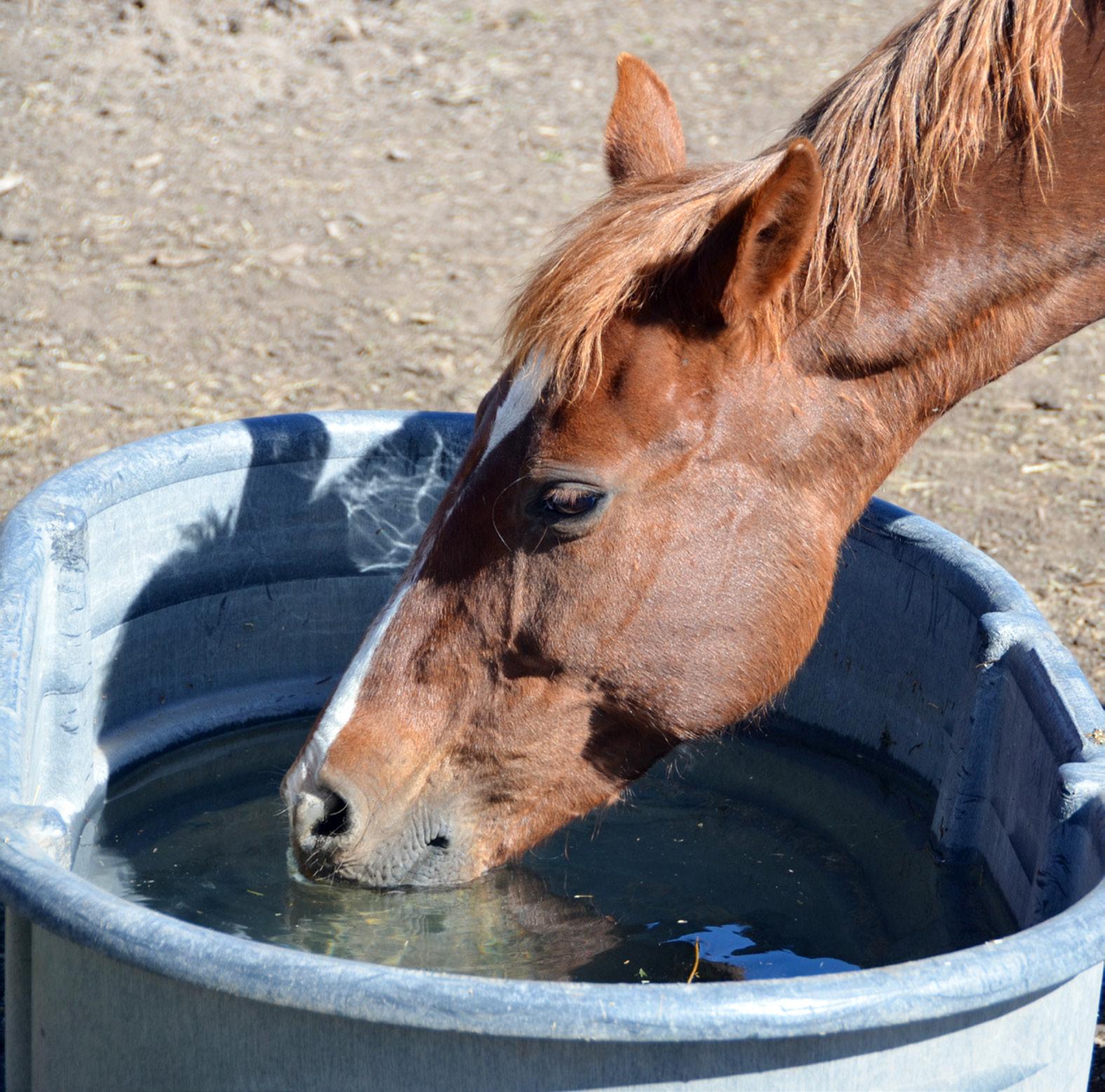
FACING PAGE: Horses are elite athletes, but ultimately fatigue limits performance. ABOVE: Access to fresh, clean water should always be available.
Adding salt to drinking water should be done with great care – limit salt addition to 30gms (one tablespoon) per five litres of water and make sure fresh water is also available.
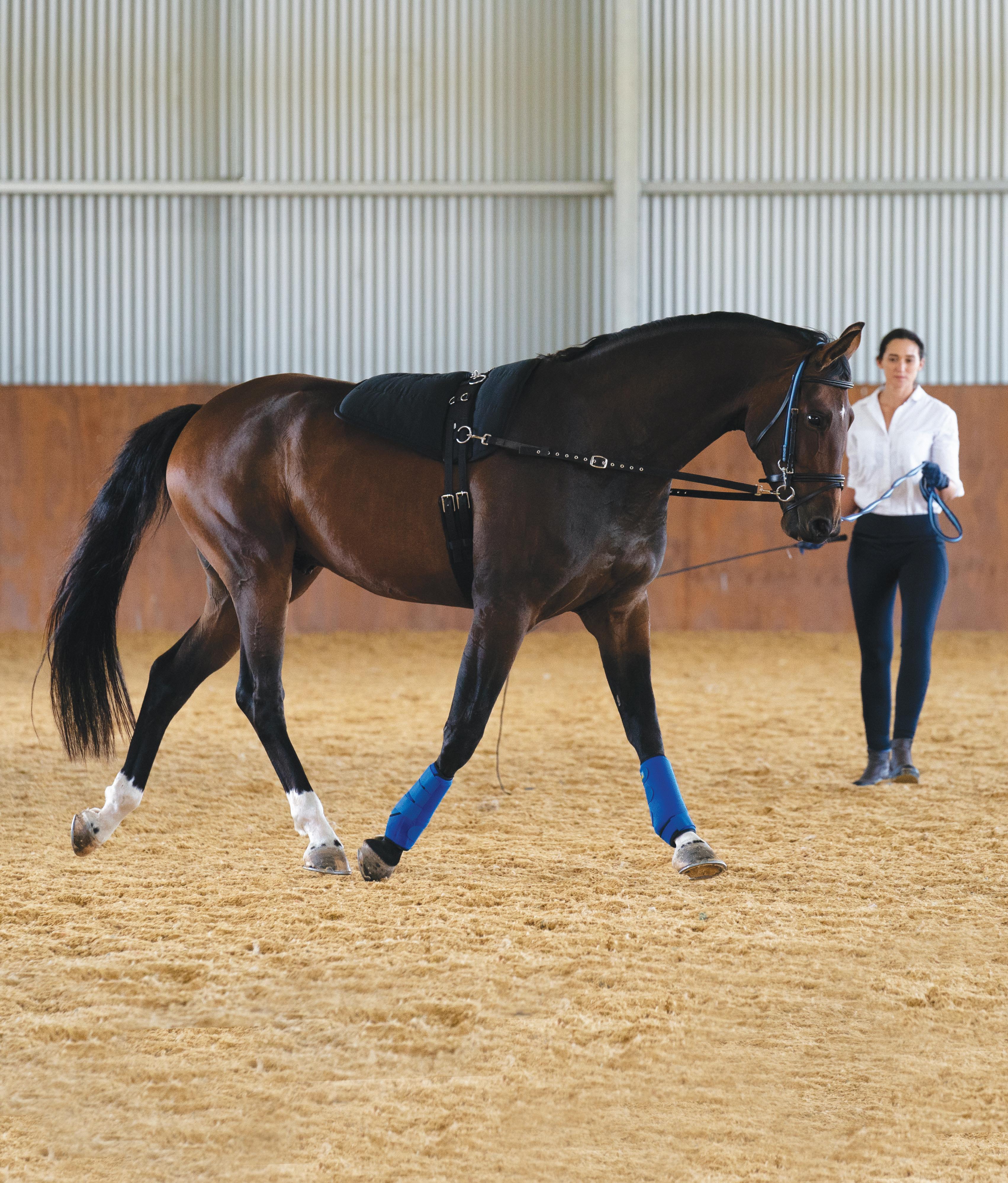
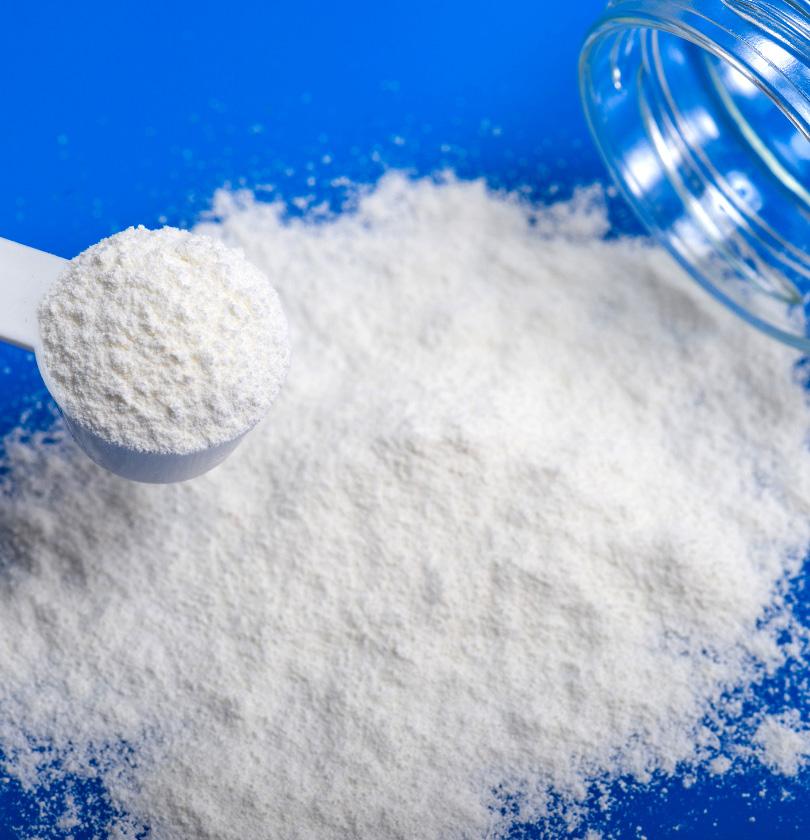
Take great care when adding salt to drinking water, with no more than 30gms per five litres.
which are common dietary deficiencies in horses. Using multiple supplements in an attempt to meet individual vitamin and mineral requirements often leads to overlap of some nutrients, deficiencies in others and imbalances. Avoid this by feeding a balanced supplement containing the recommended amounts of each vitamin and mineral.
Strategic timing: Timing the feeding of certain nutrients also delays fatigue and improves post-exercise recovery and response to training. Feed EAA and antioxidants before work, and to provide protein and energy to refuel after work, 1kg of oats + a nutrientdense supplement + 50g salt + free access to water. This takes advantage of the window of opportunity created by increased muscle blood flow during exercise and for three hours after, allowing nutrients to be delivered as the muscle demands them.
Sooner or later fatigue will occur in all exercising horses. What’s in the feed bin can help them perform a given task more easily, decrease injury risk, and delay fatigue onset. If the horse has the right nutrients, they’re likely to voluntarily perform at a higher level than if they have insufficient fuel and other nutrients.
rolled oats, 650 grams of electrolyte mix (commercial or homemade), three cups bran, one to two cups of water, and one cup of molasses, maple syrup, or applesauce. Mix well and divide into 24 cookies. Cook at 175°C for 25 to 30 minutes. Each cookie has around 30gms of electrolytes.
Further complicating the heat buildup during exercise is competition for blood flow. Blood flow to the muscles increases seventy-fold during hard work, but as body heat rises, blood is diverted away from the muscles and sent to the skin for cooling. Competition between the muscles and the skin can decrease muscle blood flow, oxygen and glucose, hastening the onset of fatigue. Oils offer significant and unparalleled advantages here, with one report showing total body heat production decreased by 14 per cent when horses were fed an oilenriched diet. Oils also reduce anxiety, heart rate, excitability and the energy used in reducing body temperature – especially important for horses training and competing in hot/humid weather.
Muscle waste products: Free radicals are a waste product released when oxygen is used to produce energy and they increase during exercise. Onboard antioxidant defence systems mop up oxidants, lengthening the time before they can damage muscle cell function and compromise performance, but there is an absolute requirement for vitamins E and C, and minerals selenium, copper, magnesium, manganese and zinc, all of Dr Jennifer Stewart BVSc BSc PhD is an equine veterinarian, consultant nutritionist, and CEO of Jenquine Equine Clinical Nutrition.
